
Almost any trekking trip in the Everest Region of the Nepal Himalayas starts with a flight from Kathmandu to Lukla, a small town that is widely considered the jumping off point for such treks. The only real alternative to flying to Lukla? Taking a 12 hour bus ride from Kathmandu to a town called Jiri and trekking uphill to Lukla for about a week – five or six days if you’re speedy.
But flying to Lukla from Kathmandu and back again can be an adventure in itself. Lukla sits in the mountains at around 2800 meters. The runway may be the shortest in the world and has airplanes landing on a slightly uphill slope as they head straight for the mountain side. The airport accommodates only small puddle-jumpers and only four at a time. Due to the mountain location and the fact that the runway starts on the edge of a cliff, visibility is extremely important. No flights can depart from Kathmandu each morning until a test flight has both arrived in Lukla and departed again.
We were scheduled to fly to Lukla on a Tuesday morning. Before we even arrived at the airport, though, we learned from our Sherpa guide, Kami, that no flights had departed at all the previous day due to visibility issues in Lukla. That meant that we were automatically bumped in priority as everyone whose flight was cancelled on Monday got rebooked in the first wave of flights that would go out on Tuesday. We were down to the third wave (flights to Lukla take off in waves of four airplanes each leaving about 15 minutes after the prior plane) – if any flights took off at all.

As soon as we arrived at the airport around 7:00 a.m., it was clear that not much was happening. The small terminal was full of anxious groups of trekkers, sitting in groups with their baggage and waiting. We soon did the same as Kami investigated and soon confirmed that, indeed, no flights were departing to Lukla yet and it wasn’t looking good. We spent the next couple hours sipping Fantas in a small cafeteria on the second floor and then hanging out on the roof watching planes headed for other destinations land and take off. Yes, we were up on the roof of the airport, which we easily accessed from a stairway outside of the café, followed by a dirty hallway and an even dirtier metal staircase covered in grease. The airport employees who were lounging on the roof as well didn’t seem to care (or even notice) that we were there. But I digress.
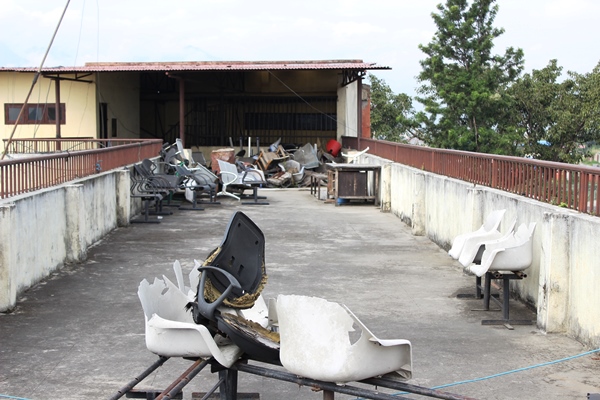
By around 10:30, I was back downstairs in the terminal, lounging with our bags and making friends with some of the solo travelers around us. The crowd in the airport had probably quadrupled since we first arrived, but no one headed for Lukla was going anywhere. I met two girls from Australia who had spent the entire previous day at the airport waiting to depart, only to have to return again and wait some more. While they were supposed to be trekking to Everest Base Camp, they were debating switching their flight to Pokhara to hike in the Annapurna region instead. I also met a guy from Austria who was supposed to be climbing to the top of Island Peak, a mountain in the Everest Region that requires a special permit. He was also on day two of his wait to fly out and he was contemplating the aforementioned bus to Jiri and additional week of trekking to make it to Lukla. What was amazing was that everyone seemed to just be taking the delays in stride – no one freaking out or getting angry or yelling as would often be the case back home.
At the same time, our group and many others were exploring helicopter options. Helicopters don’t require the same level of visibility as airplanes, so even though no flights were running, helicopters were. The only problem? There are only four commercial helicopters at the Kathmandu airport and three were in use for a search and rescue operation after a recent avalanche. The remaining chopper was hiking prices up to more than $500 per person – more than double the normal rate!
By 1:00 p.m., our flight was officially cancelled and Kami worked with our travel agent to get us refunds and book us on a flight for Wednesday (unlike most airlines, flights to Lukla do not simply rebook you on the next available flight; they issue a refund and it’s up to you to collect the refund and rebook yourself). Luckily, our travel agent (often referred to by me as our “fixer”) pulled some strings and got us on the second flight out in the first wave on Wednesday. This time, we made it out. The short flight was uneventful, slightly bumpy and quite scenic. While I had heard multiple times that the landing was terrifying, I didn’t find it so bad.
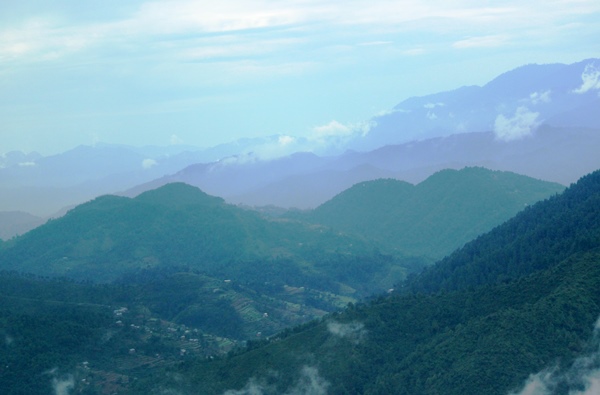
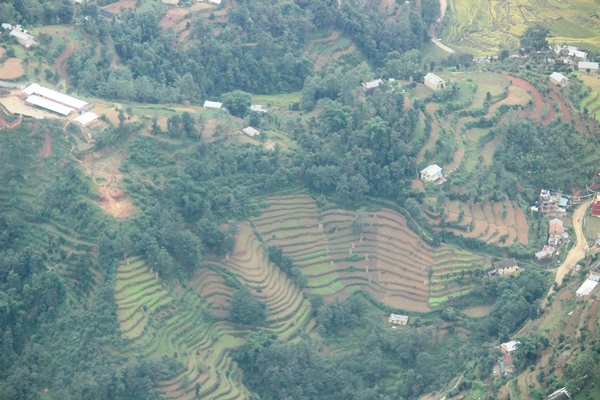



Two weeks later, it was time to do it all again. Scheduled to fly back to Kathmandu on a Thursday, we had experienced torrential downpours earlier in the week and had heard from others heading up the mountains that flights had been delayed as many as three days. Luckily, it cleared up the day before we were schedule to depart so much of the backlog had gotten out. We were scheduled to leave on the second flight out run by Makalu Airlines. The airline only has one plane, stationed in Kathmandu, so as we ate breakfast at our lodge overlooking the runway, we anxiously awaited the sight of a Makalu plane landing. Shortly before 7:00 a.m., we heard the first airplane of the morning approaching and did a quiet cheer that flights were running despite the white morning fog rolling in.
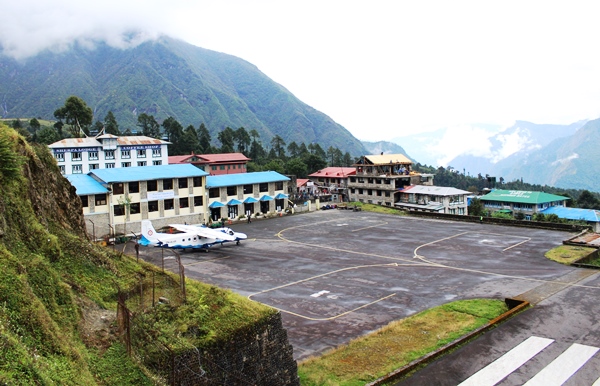
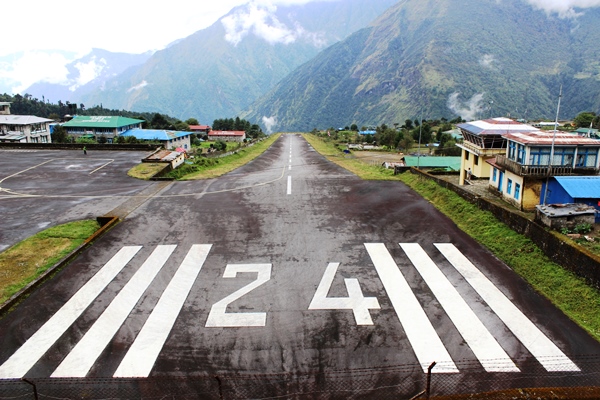
About an hour later, a representative from Makalu somehow found us at the lodge and told us there was an issue with the Makalu plane and that she needed five of us to go on a flight now and the others would go later. Not really understanding what was going on, we quickly gathered our bags and made the five minute walk over to the airport. We had our bags weighed (there is a weight limit on such small planes) and then hand-inspected by security officers before being checked in. Then, with handwritten boarding passes from Sita Airlines in hand, we split into two lines – one for women and one for men – to go through security.
Once through security, we headed downstairs to a waiting room that looked out right onto the small runway and started the waiting game again. A flight from Tara Airlines landed. Then another. Then one from Makalu. A the passengers from each plane departed, an officer near the door called out which flight it was and lined up the departing passengers to head outside. Finally, a Sita plane landed and our number was called. Five of us headed for Kathmandu, where we would wait nearly two hours for the others to join us. But at least we made it out and our Lukla adventure was over.
